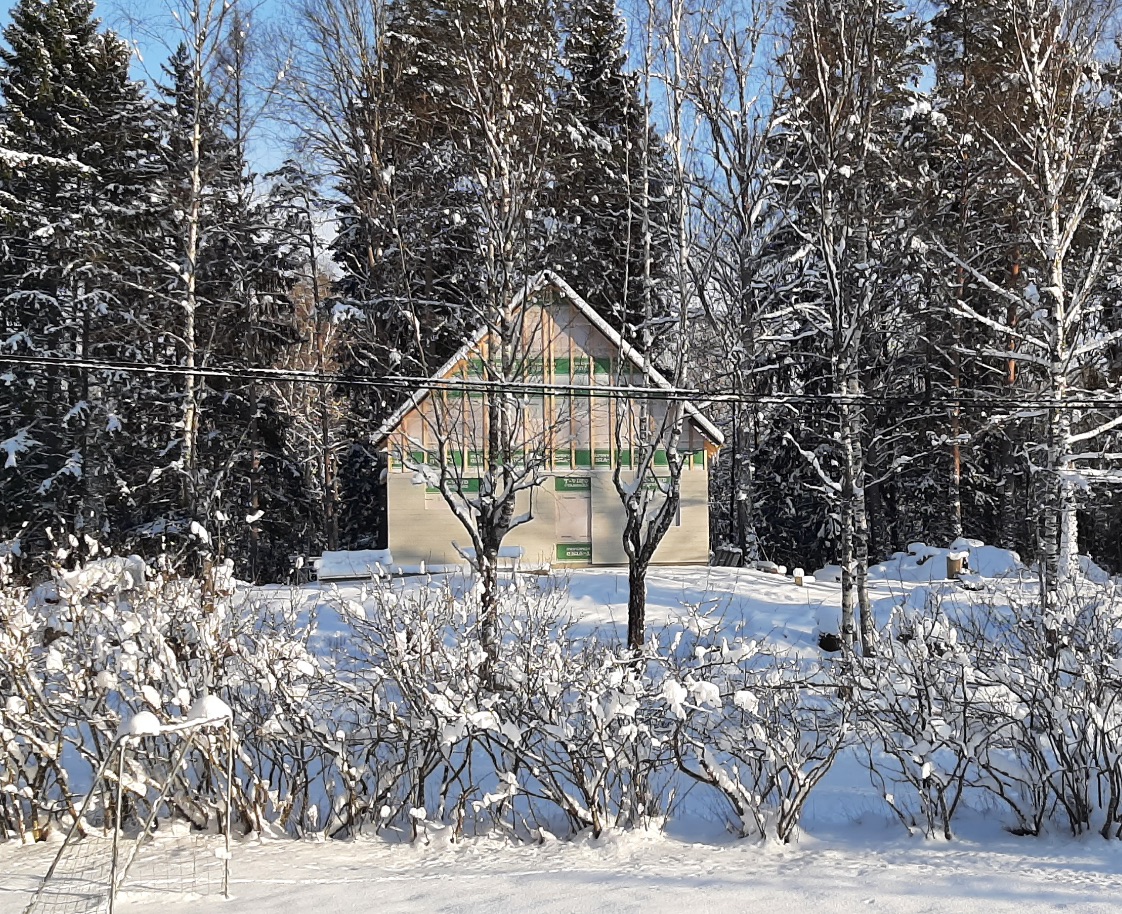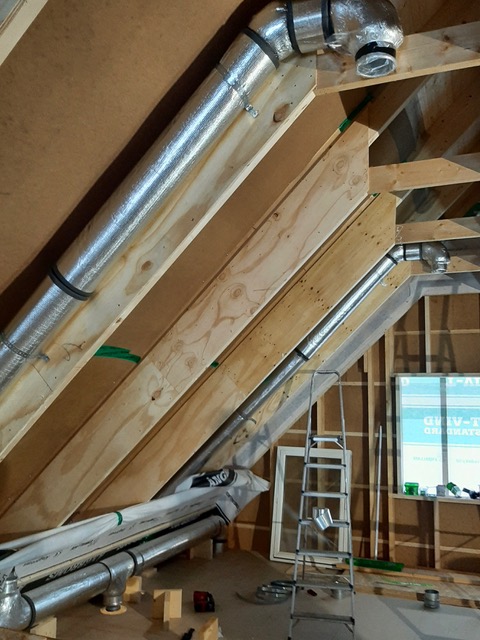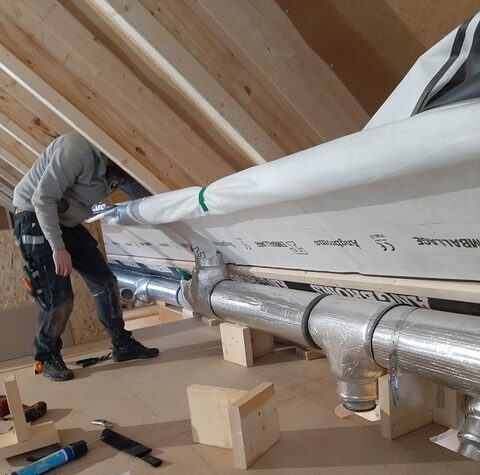Suitable for houses and for renovation
Climate Recovery’s ventilation system is not only suitable for the new build of large building complexes. “The system works equally well on a smaller scale, for example in house building and renovation,” says Erik Johansson, ventilation fitter.

Erik Johansson has extensive experience as a ventilation fitter. Today he owns and operates Skeppsdals Ventilation in Åkersberga. Their projects consist of anything from installing ventilation solutions in new build houses to finding effective solutions when renovating older properties.
“Today there is a growing interest in finding climate smart solutions, even though tradition is a powerful force in the construction industry,” he says. “However, if new solutions are as effective as the old ones, or even better, while not being more expensive, people will be increasingly willing to try them.”
“At the same time, it is noticeable that many customers are increasingly environmental aware, and are therefore choosing to build sustainably for the climate to the greatest possible extent.”
Ventilation is only a small part of the construction process, but it is important because in many ways it constitutes the “lungs” of a building.

“Poor ventilation is guaranteed to cause problems. Both for the building itself and for the people who will live and perhaps work there,” Erik Johansson continues. “It is therefore a good idea to go that extra mile to find the optimal solution, while remaining open to new ideas.”
This was also the reason that when Erik Johansson’s company was commissioned to install the ventilation system in a new build house in Upplands-Bro, they chose Climate Recovery ventilation ducting.
“We came into contact with Climate Recovery more or less by chance, but pretty soon we saw that there were several advantages to their solution compared to traditional sheet metal ducting. This included both the environmental benefits and practical aspects of installation.”
 The first thing that Erik Johansson emphasizes is the environmental aspect. Climate Recovery ventilation ducting is made largely from recycled materials – glass, sand and soda – and thus requires significantly less energy in its production than that of traditional sheet metal ducting.
The first thing that Erik Johansson emphasizes is the environmental aspect. Climate Recovery ventilation ducting is made largely from recycled materials – glass, sand and soda – and thus requires significantly less energy in its production than that of traditional sheet metal ducting.
“As a professional, I can see other benefits. Climate Recovery ducting is easy to work with. Both because it weighs comparatively little and because it comes flat packed, which in turn means that it takes up less space on a building site where storage space is always scarce.”
“In addition, it makes assembly easier. All that is needed is a knife to cut it to length. Another advantage is that it is delivered ready insulated, and thus provided with a vapor barrier, resulting in one less element in installation. In turn, this means that its cost is comparable to traditional sheet metal ducting, which is considerably more demanding to work with.”
“Another advantage is that there is no heat loss when the air returns to the heat exchanger.”
Also for renovation of older properties
Erik Johansson also sees clear benefits with the Climate Recovery concept for the renovation of older properties.
“When it comes to renovating older properties, energy saving is often at the top of the agenda. Of course, this is commendable,” says Erik Johansson. At the same time, there are risks if one is not careful.
“It is not uncommon for too much insulation to be installed. Although heating costs are reduced, new problems often arise. This is something that is often experienced later, when poor ventilation causes moisture and mold damage. This naturally needs to be remedied and can then cost considerable sums of money to deal with.”
“I see advantages in Climate Recovery ducting here too. This is because it is provided with a vapor barrier while being easy and flexible to work with in existing environments. And, at least in my opinion, the end result is also more attractive if installation is carried out properly.”
“So, I just want to say to my colleagues in the industry – try it out! Innovation is always good, in this case both for the environment and for a job well done and satisfied customers,” Erik Johansson concludes.
Our house in numbers.
130 m2 heat recovery system with potential for nighttime passive cooling. Ductwork placed between trusses, joists, and in attic.
Energy Efficiency
Lower pressure loss in CR t-pieces and bends as well as lower fan speed and power creates saving of 41000 kWh over 20 years.
Logistics
Fewer deliveries and less floorspace needed for material.
Time Plan Savings
Project shortened by 2 days due to 2-in-1 system = faster tenant move-in.
Indoor Climate
CR Ducts maintain desired temperature in supply and passive air better than comparable steel + insulation.
Environmental Certifications
Selection of CR secures a more sustainable process from manufacturing to maintenance and use.
CO2
Over 166 kg CO2 emissions savings at installation and 770 kg CO2 savings after 20 years in use.
Savings of installation costs by selecting CR Ducts:
Logistics
One delivery and simplified handling of material during installation.
Labour Savings
2-in-1 means 1 day saved from insulation work.
Installing
No coordination for insulation work and pre-insulation that fits into tight spaces provided 5 labour hours saved.

